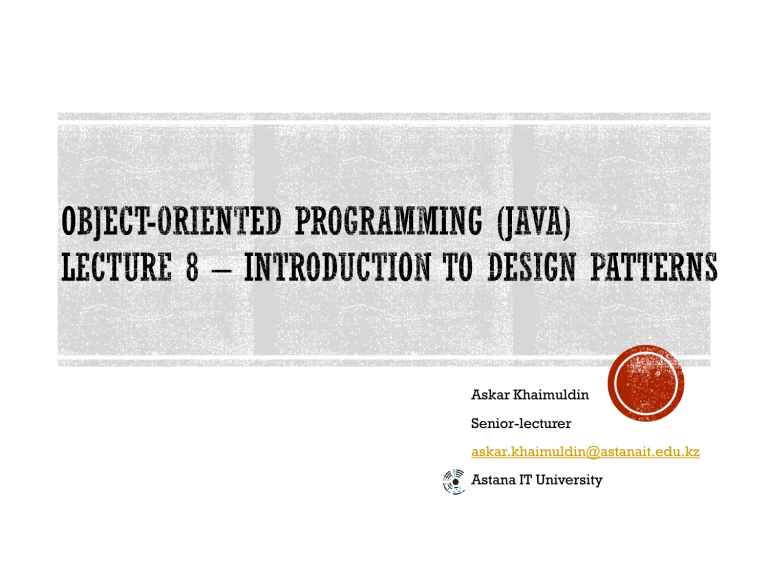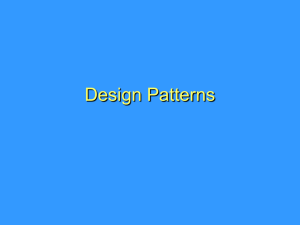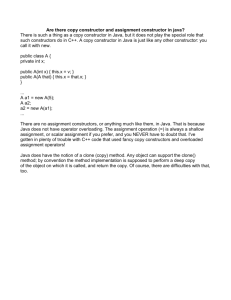
Askar Khaimuldin Senior-lecturer askar.khaimuldin@astanait.edu.kz Astana IT University ▪ Preface ▪ Types of Design Patterns ▪ Singleton ▪ Builder ▪ Factory ▪ In software engineering, a Design Pattern describes an established solution to the most encountered problems in software design ▪ It represents the best practices evolved over a long period through trial and error by experienced software developers ▪ Types of Design Patterns: ▪ Creational ▪ Structural ▪ Behavioral ▪ Creational Design Patterns are concerned with the way in which objects are created. They reduce complexities and instability by creating objects in a controlled manner ▪ The new operator is often considered harmful as it scatters objects all over the application. Over time it can become challenging to change an implementation because classes become tightly coupled. ▪ Creational Design Patterns address this issue by decoupling the client entirely from the actual initialization process. ▪ Structural design patterns are concerned with how classes and objects can be composed, to form larger structures ▪ Behavioral design patterns are concerned with interactions and responsibilities of objects ▪ The Singleton Design Pattern aims to keep a check on initialization of objects of a particular class by ensuring that only one instance of the object exists throughout the Java Virtual Machine. ▪ A Singleton class also provides one unique global access point to the object so that each subsequent call to the access point returns only that particular object Private constructor Instance is taken from method ▪ For resources that are expensive to create (like database connection objects) ▪ It’s good practice to keep all loggers as Singletons which increases performance ▪ Classes which provide access to configuration settings for the application ▪ Classes that contain resources that are accessed in shared mode ▪ The Builder Design Pattern is another creational pattern designed to deal with the construction of comparatively complex objects. ▪ When the complexity of creating object increases, the Builder pattern can separate out the instantiation process by using another object (a builder) to construct the object. ▪ This builder can then be used to create many other similar representations using a simple step-by-step approach. ▪ When the process involved in creating an object is extremely complex, with lots of mandatory and optional parameters ▪ When an increase in the number of constructor parameters leads to a large list of constructors ▪ When client expects different representations for the object that's constructed ▪ This pattern delegates the responsibility of initializing a class from the client to a particular factory class by creating a type of virtual constructor. ▪ To achieve this, we rely on a factory which provides us with the objects, hiding the actual implementation details. The created objects are accessed using a common interface. ▪ When the implementation of an interface or an abstract class is expected to change frequently ▪ When the current implementation cannot comfortably accommodate new change ▪ When the initialization process is relatively simple, and the constructor only requires a handful of parameters Java Design Patterns, 2015, by Rohit Joshi, Java Code Geeks ▪ Chapters 6, 12, 13


